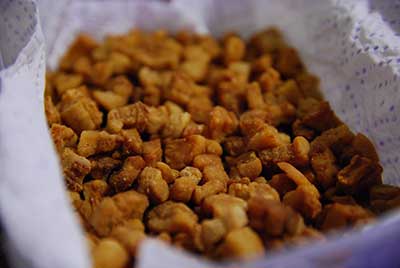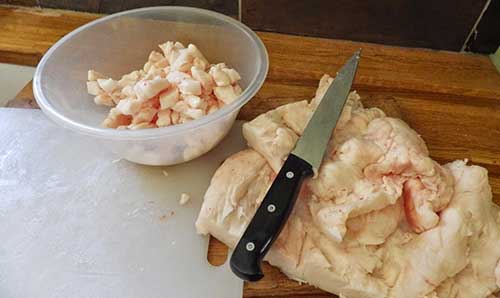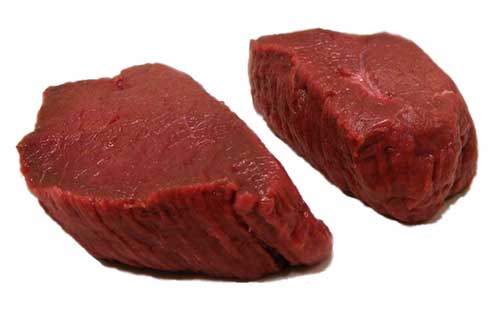Most traditional hunting societies have a perspective that is unfortunately greatly missing from the Western society when it comes to where our food comes from and how those animals taken for food should be treated.
Even the most superficial of observations will show that these cultures often place value on the animal’s life often at a comparable level to that of the hunter. They recognize the life that flowed through that creature, that it differs in no way from the life that flows through us. They recognize the struggle that comes with living and that life must consume life in order to continue to live.
This viewpoint permeates the hunting process with a necessary degree of respect and gratitude for the life lost in the animal’s death and the life sustained through the eating of that animal by the hunter and their family and/or community. It’s an attitude that, I feel, has its place within Western culture and that such an outward and selfless focus is one that has benefit to anyone who enjoys hunting.
While I’m not asking anyone to head out to the wilderness with primitive tools and to pray over every animal kill unless they so feel compelled to, I do encourage every hunter to consider the life of that animal and, as a sign of respect and true gratitude for that gift of food, to take what steps they can to ensure that as much of that animal is used and does not go to waste.
Making Use of Your Latest Hunting Success
Making the Most of What You’ve Got
An obvious place to start is in making sure that you’re not just hunting for sport or to merely collect another trophy. You do this by actually eating the meat from the animals you bring in.
While proper butchering is a skill that takes years to develop and know instinctively, if all you can do is cut the meat off of the bone, slice it into steaks, cube it into stew meat, or grind it up into hamburger than that is enough.

If you’ve got the time and skills, there is a quite a bit of meat that can be taken off an animal to fill your freezer and keep you well fed until next hunting season. But, once the meat is cut and packed up, you still have more opportunities to make use of that animal.
In other posts, we’ve already discussed how to tan hides as well as how to make a European skull mount so the following suggestions will focus on how you can make use of the fat and bones left over after packing up the meat.
In the end, you will have found a use for as much of the animal as possible –a fitting way to show your respect and gratitude.
Making Lard

As you butcher your kill, especially with larger animals like deer and elk, you’ll notice thick sections of white fat. This fat is an invaluable resource that you can salvage and process in order to use for cooking and for healing salves to help combat dry winter skin and rashes.
Rendering fat into lard is a simple process that pays off in a finished product that will last you until next hunting season –unless you use it all up.
You don’t need any fancy equipment and can make creamy white lard in a crock pot, a large cooking pot on the stove, or even in a roasting pan in the oven. As long as the container has a tight-fitting lid and holds all of the fat with room to accommodate bubbling, it doesn’t matter what you cook it in.
Make sure that there is as little tissue attached to the fat as possible. This saves you time in having to scoop out the tissue (which will essentially be deep fried in this process) and makes for cleaner lard.
Break the fat into smaller pieces to encourage it to melt faster and speed up how long this process takes. Place the pieces into your cooking container and add a small amount of water to keep the fat from burning to the bottom. This water will evaporate during cooking.
Cook the fat over low heat, on a stove top that will be no higher than medium-low, or in the oven 300 degrees Fahrenheit is a good temperature. This process usually takes a few hours. Try not to rush it for best results.

Once all the fat has melted, remove the container from heat and allow it to cool until it’s no longer boiling but not so much that the melted fat begins to turn white along the edges. With a slotted spoon, scoop out as much of the crispy deep fried tissue sitting along the bottom.
When the melted fat has cooled more and begins to turn white along the edges of the container, it’s time to transfer it into another container. Plastic dishes used to hold leftovers are a great option, but be sure that the melted fat is cool or it may melt the bottom of the plastic container.
Pour the melted fat slowly, making sure that any remaining bits of brown tissue remain in your cooking container. A rubber spatula is useful for scraping the melted fat off of the sides of the cooking container and into the plastic container. Try to get as much of the melted fat into the plastic container as possible.
Allow the plastic container of melted fat to sit uncovered on a table or counter until cool. It will harden as it cools. Once it sets, you can put the lid on the container and store it in the refrigerator.

To use, scoop out the lard from the plastic dish. If it’s pretty hard, as can happen with lard made from deer fat, you may need to scrape at it with a metal spoon. It will easily melt in order to use for frying or sautéing food. You can also melt the lard in order to more accurately measure the amount for baking.
Making Soup Stock
Once you’ve packed up the meat, and rendered the fat into lard, you won’t have much left other than a pile of bones. But these, too, still have use. There’s likely still a bit of tissue left attached to the bones, especially the rib cage, and this can be used to make a delicious broth that you can use for soups and roasts.

All you need is a large stock pot. Place the bones inside the pot and add enough water to thoroughly cover them. You can add in vegetables like carrots, celery, and onion to add to the flavor of the finished broth, however, this isn’t necessary. A handful of salt is recommended, though.
Bring the water to a boil, then place the lid on the pot and reduce the heat to keep the water at a steady boil. Let this cook for a few hours in order transfer as much of the flavor and nutrients from the bones and vegetables to the broth as possible.
When finished, you can either pick out the bones with tongs and a slotted spoon, or you can strain the broth through a metal sieve and into another container. Allow the broth to cool before straining, but it should be warm enough that any fat remains melted.
This broth can be stored in plastic zip-close bags, plastic containers for leftover food, or mason jars. If you’re not planning on using it right away, it is recommended to freeze it. If you’ve stored the broth in mason jars, allow the broth to first freeze with the lid off to prevent damage to the jar and avoid potential injury.

The remaining cleaned bones can be used to make a variety of tools, such as knives, if you’re handy and willing to learn a new skill. Otherwise, you can dispose of them now.
Final Thoughts: Waste Not, Want Not
It is hoped that this post has given you pause to consider some of the ramifications of hunting and to consider new ways to make the most of the game animals you bring in. There are many options available to you in order to make the most of that animal for food, which is what hunting is really all about in the end.